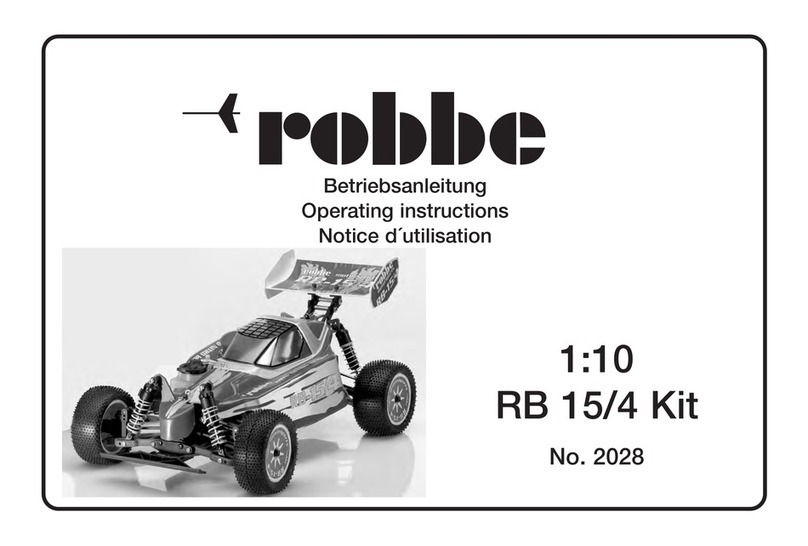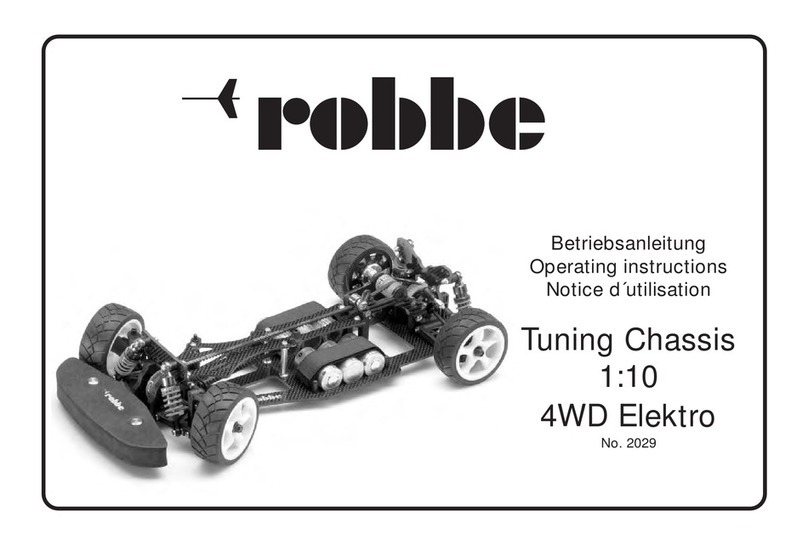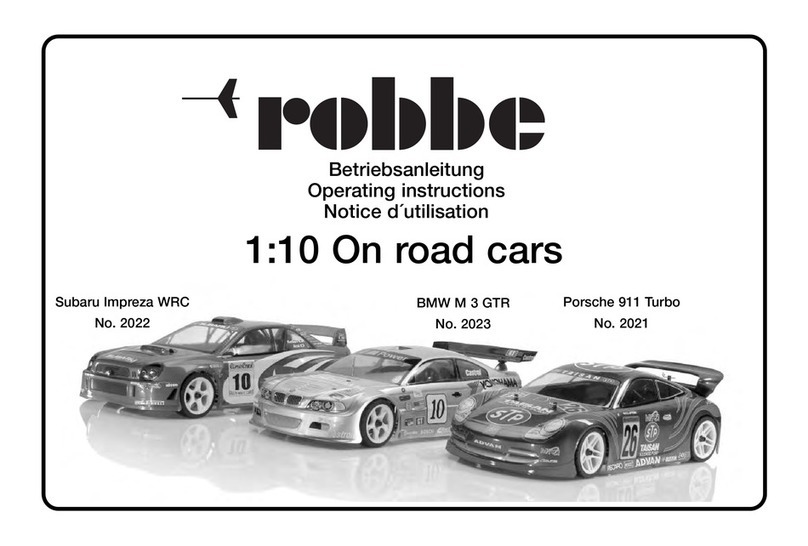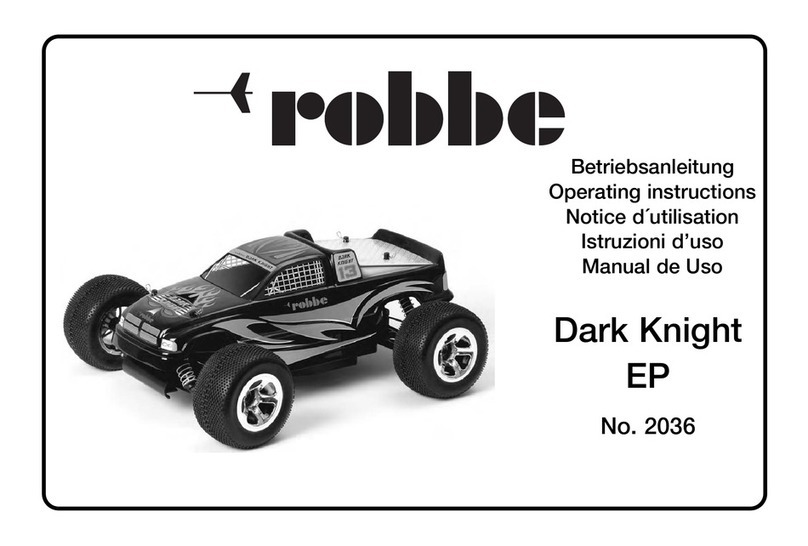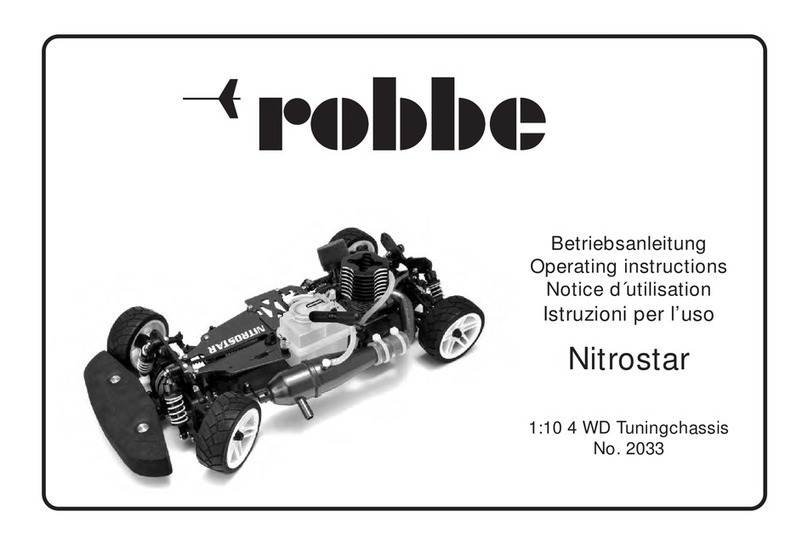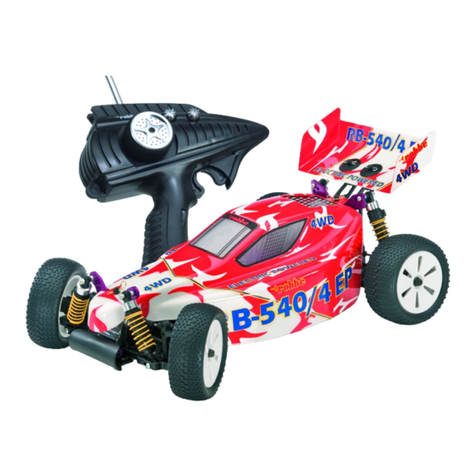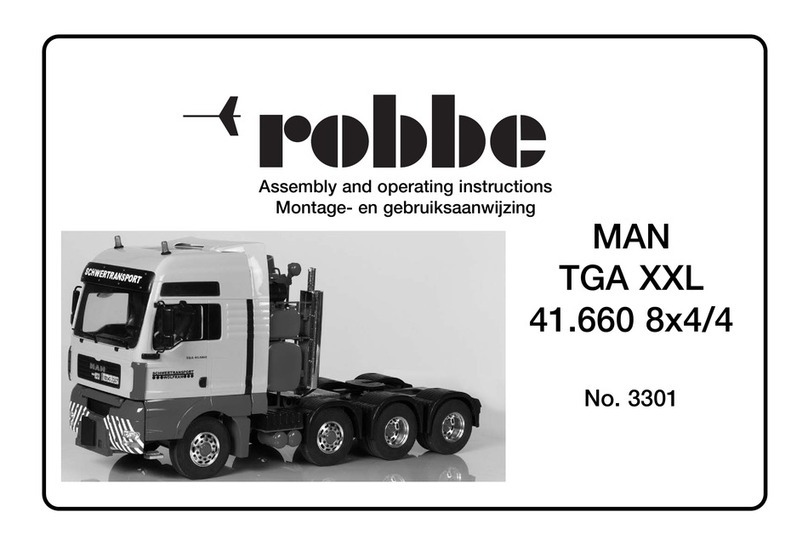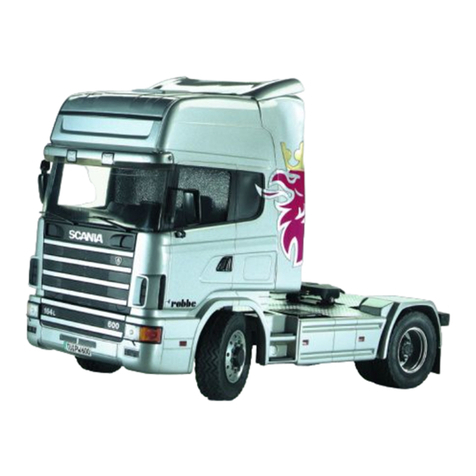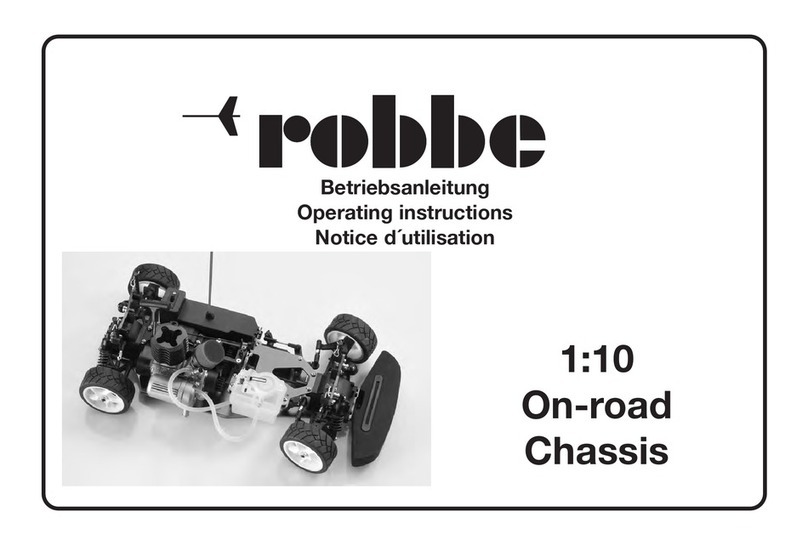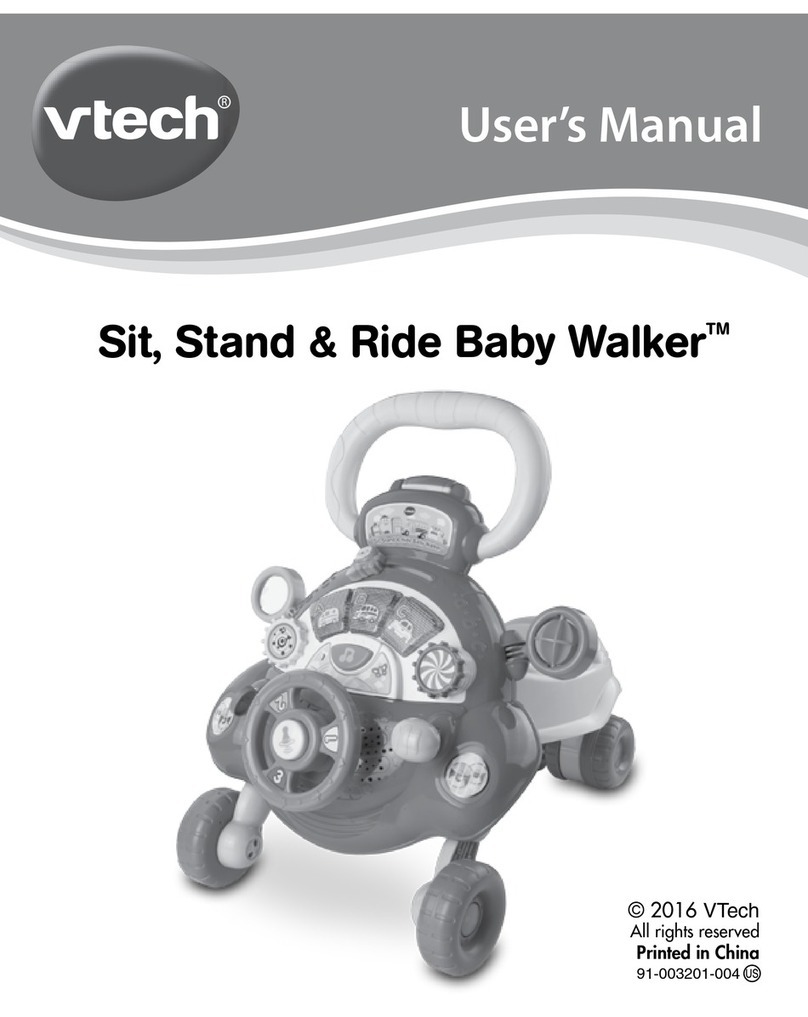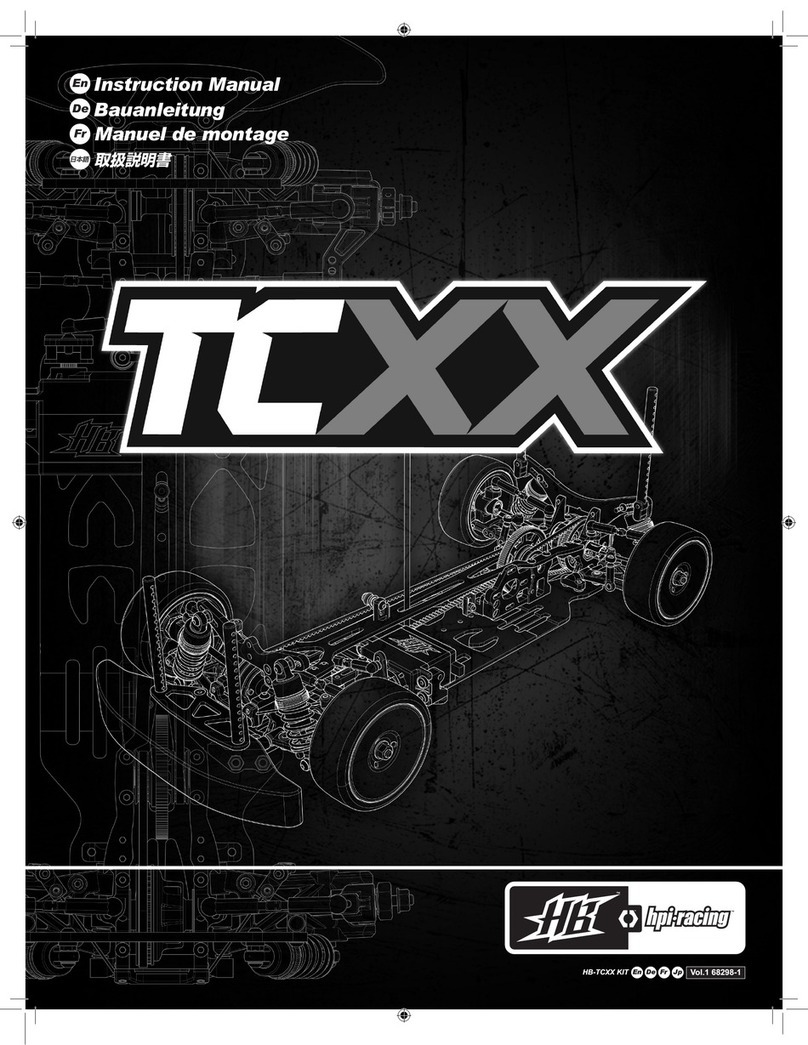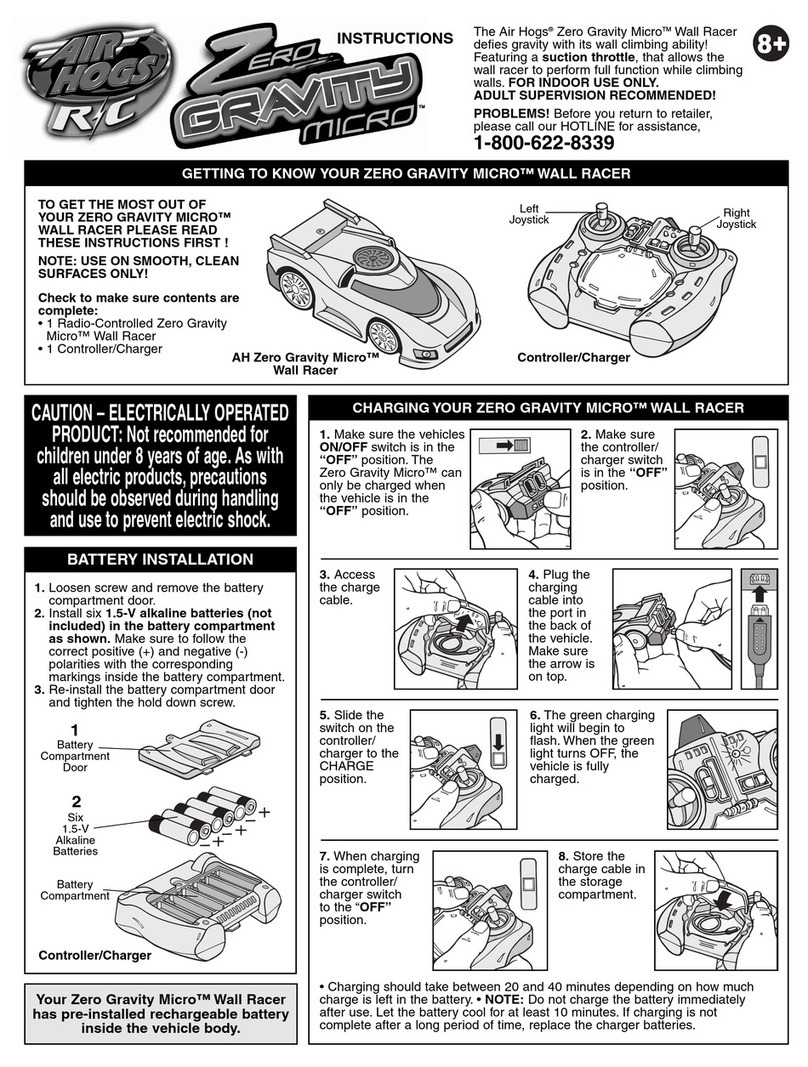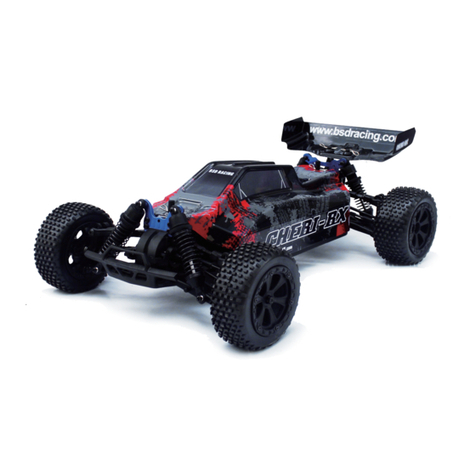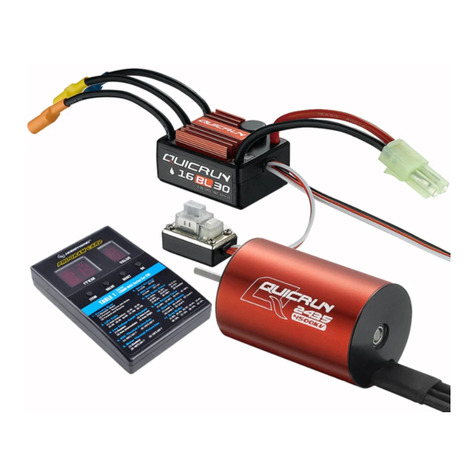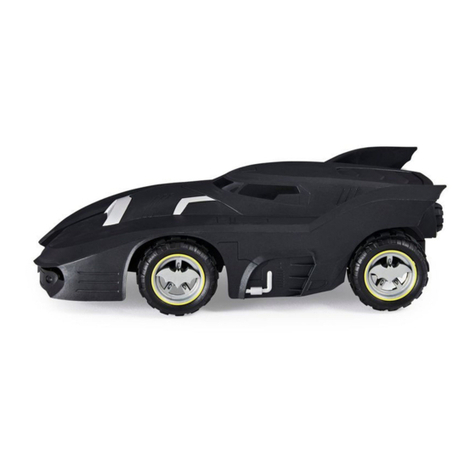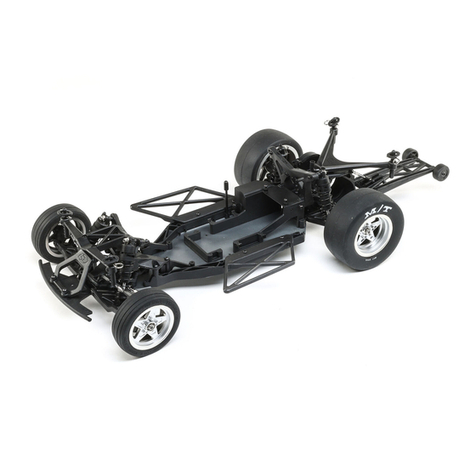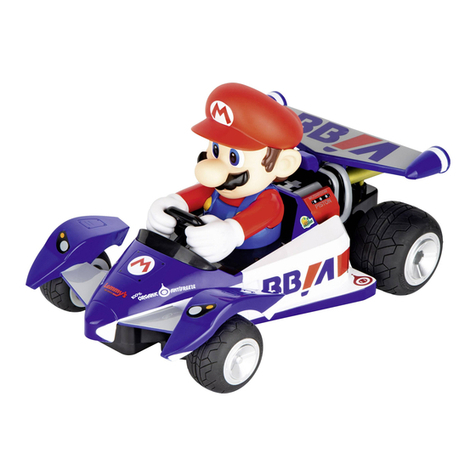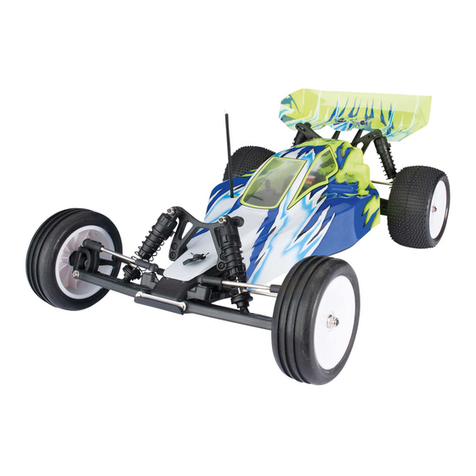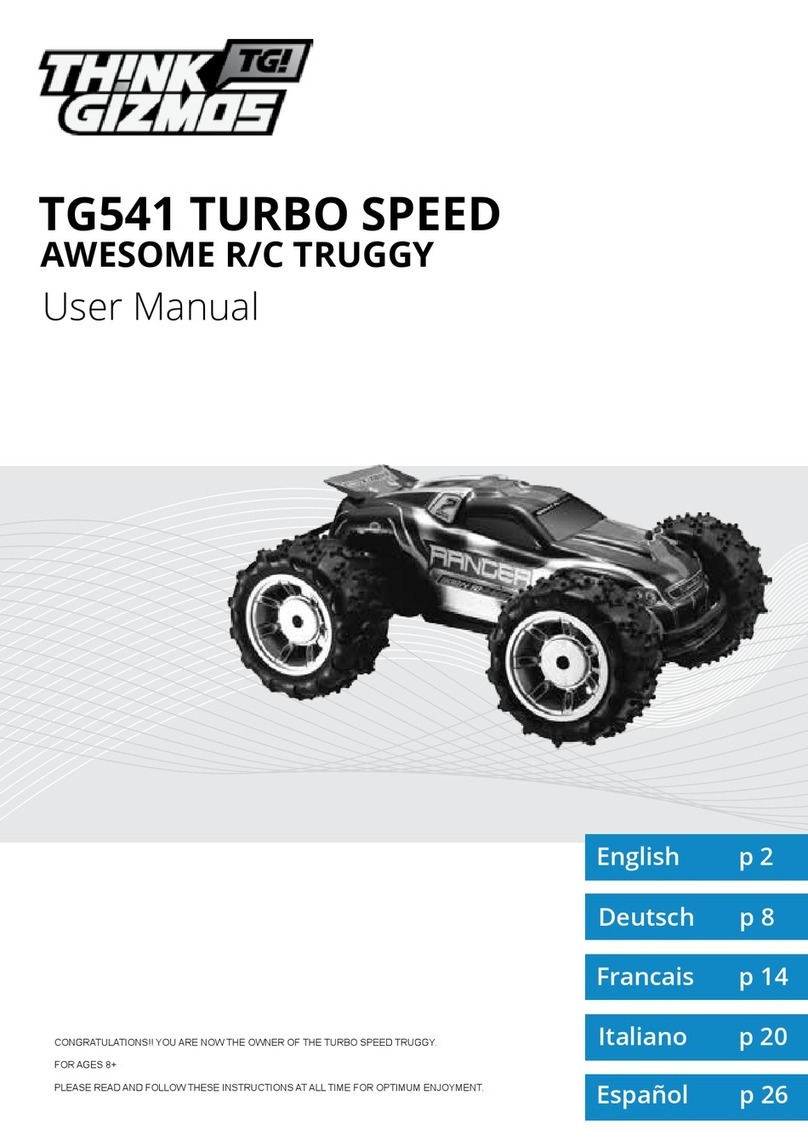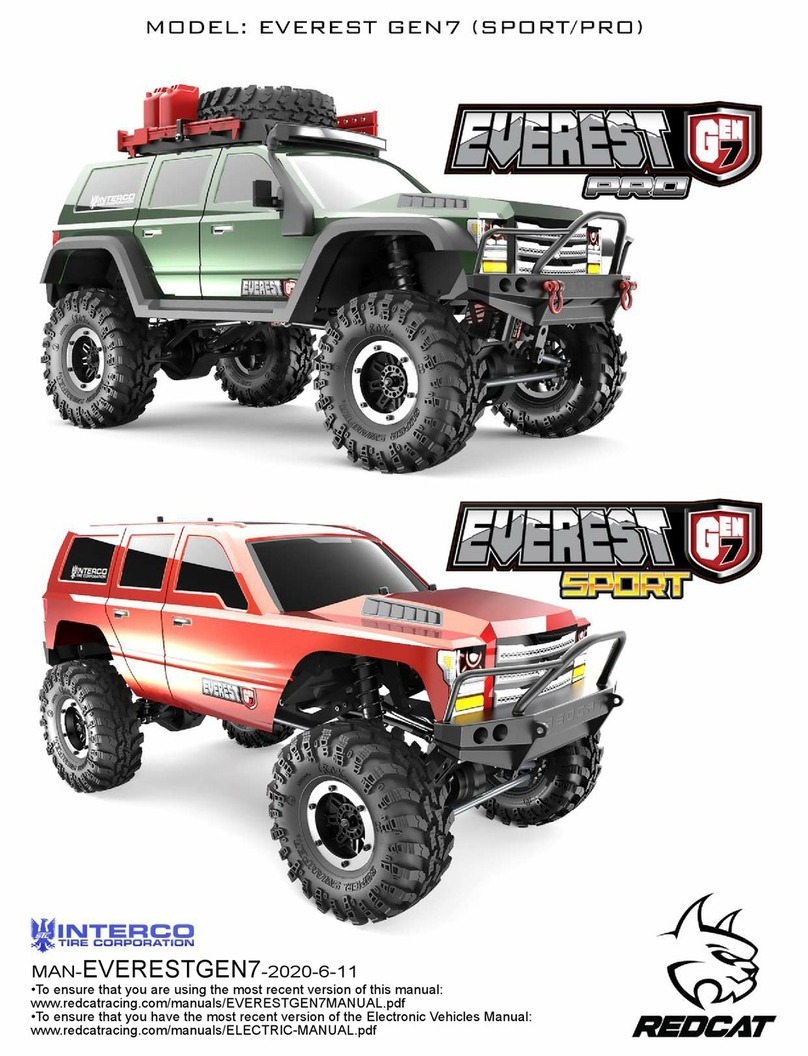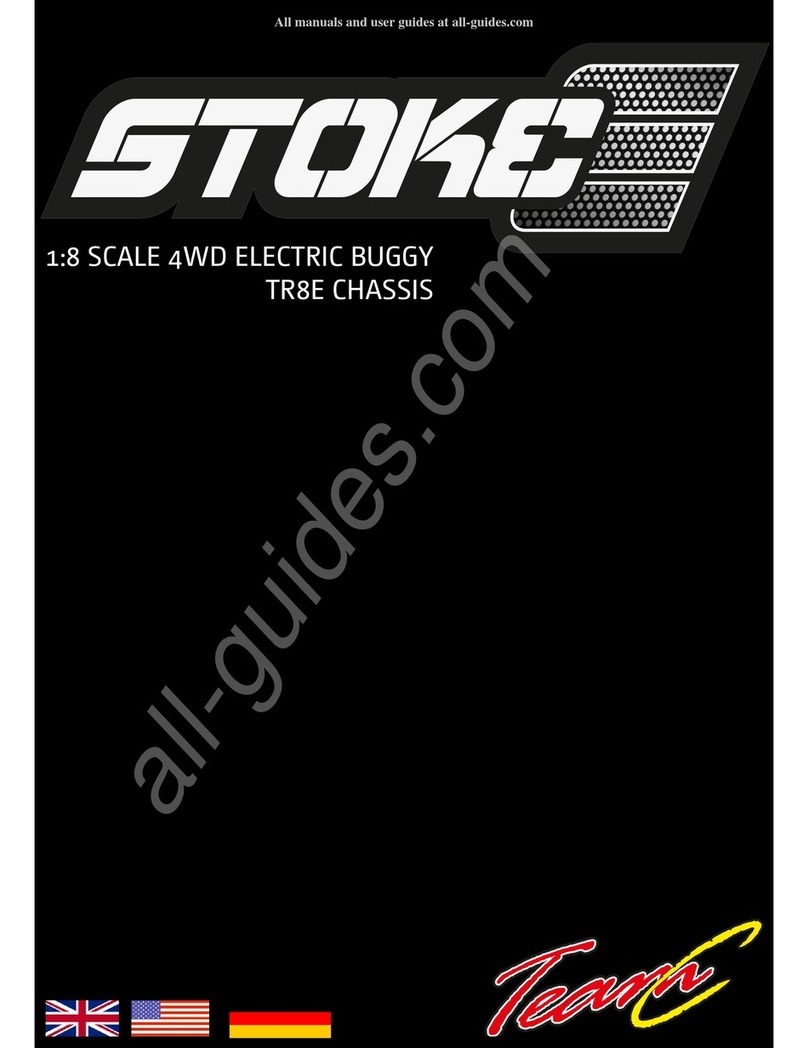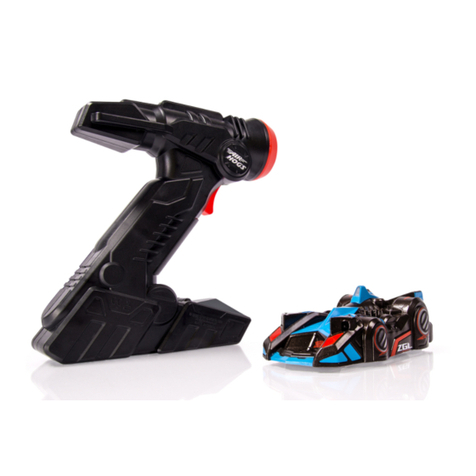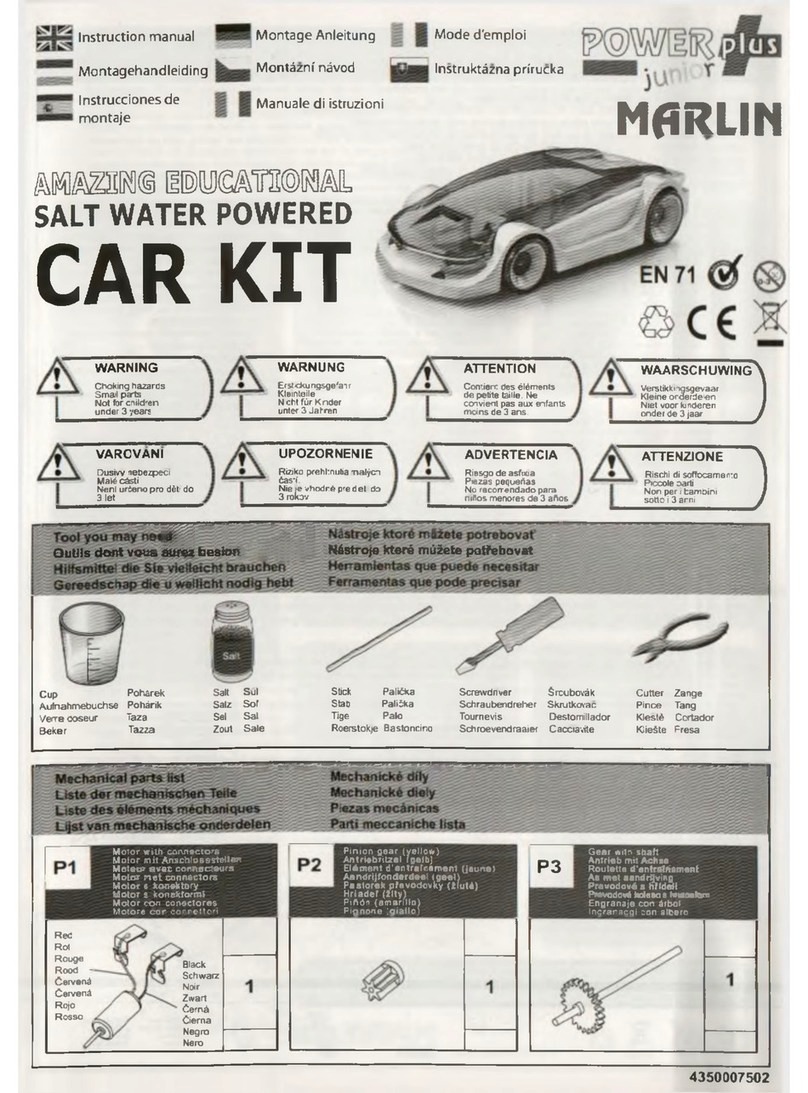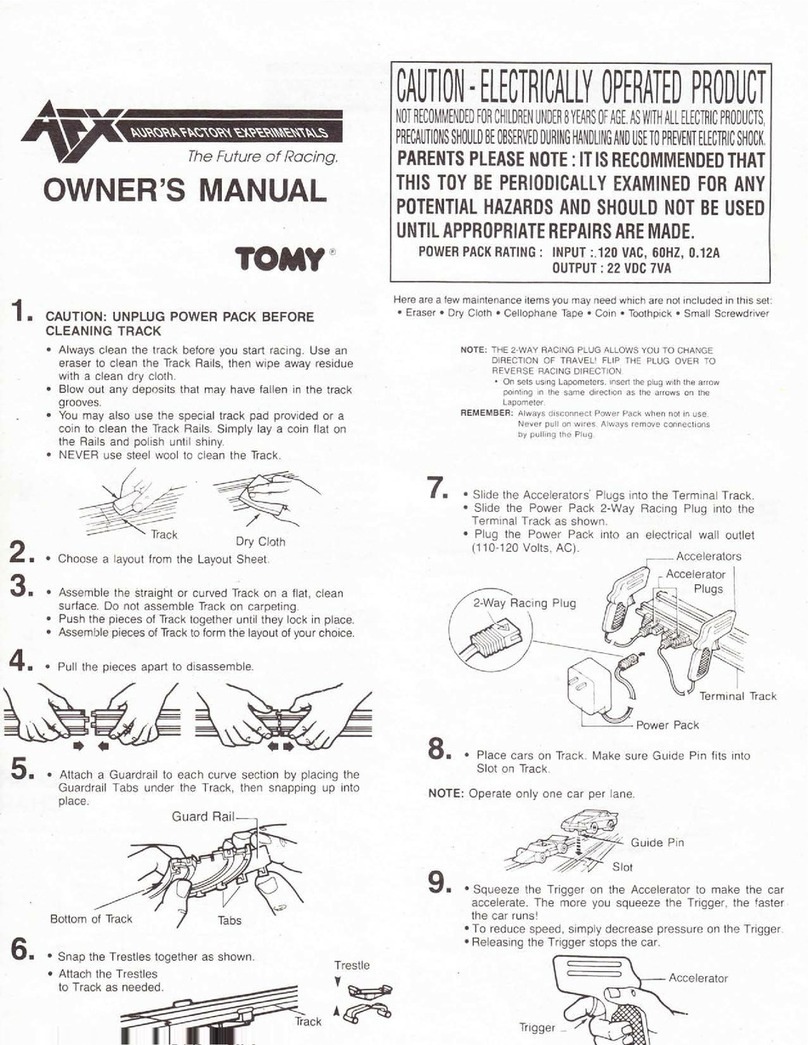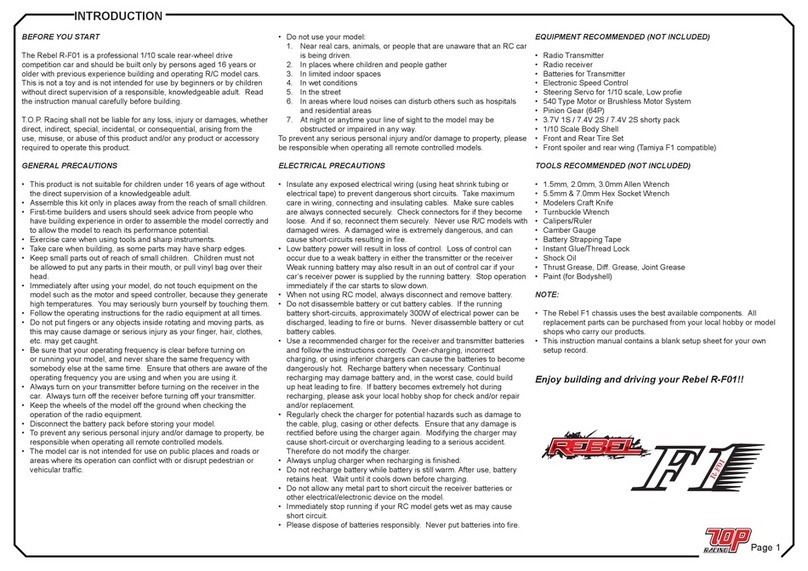Stage 2: Front axle
Part No. Description Size (mm) No. off
2.1 Ballrace 5 Ø x 11 Ø x 3 4
2.2 Wheel bearer 2
2.3 Wheel axle 5 Ø x 24 2
2.4 Front axle 2
2.5 Bush 4
2.6 Cheesehead screw M2.5 x 8 4
2.7 Washer ø 8 x 5 x 0,5 2
2.8 Dowel pin 2 Ø x 12 2
2.9 Front wheel driver 2
2.10 Hexagon nut M5 2
2.11 Tyre 2
2.12 Tyre 2
2.13 Front hub cap 2
2.14 Hex-head screw M1.6 x 8 20
2.15 Front leaf spring 2
2.16 Cheesehead screw M3 x 5 4
2.17 Shakeproof washer 3.2 O.D. 4
2.18 Servo mount bracket 2
2.19 Steering servo 1 N.I.
(see separate sheet for recommended servo)
2.20 Servo output lever (with servo) 1
2.21 Cheesehead screw M2 x 10 2
2.22 Hexagon nut M2 3
2.23 Ball-link 16.5 4
2.24 Flanged ball 5 Ø 4
2.25 Trackrod 2 x M2 x 60 1
2.26 Steering pushrod 2 x M2 x 40 1
2.27 Self-tapping screw 2.2 Ø x 11 3
2.28 Cheesehead screw M2 x 10 1
2.29 Self-tapping screw 2.2 Ø x 6,5 2
Preparation:
-Prime the wheels 2.12, paint them and allow to dry
Preparing the front axle (parts 2.1 - 2.14)
2a Press the ballraces 2.1 into the wheel bearers 2.2 and
fit the wheel axles 2.3 through them.
-Fit the bushes 2.5 in the front axle 2.4.
-Attach the wheel bearers 2.2 to the front axle 2.4
using the cheesehead screws 2.6.
-Fit the washers 2.7 on the wheel axles 2.3, insert the
dowel pins 2.8 and secure them with thread-lock fluid.
-Fit the front wheel drivers 2.9 on the axles 2.3 and
secure them with the hexagon nuts 2.10.
2b Pull the tyres 2.11 onto the painted wheel rims. Secure
the tyres with a little cyano glue.
- Press the hub caps 2.13 into the wheels 2.12.
-Attach the wheels to the wheel drivers 2.9 using the
hex-head screws 2.14.
-Use a socket spanner AF 3,2.
Stade 2: montage préliminaire du châssis
n° désignation cotes (mm) nbre
2.1 roulement à billes ø 5 x ø 11 x 3 4
2.2 support de roue 2
2.3 axe de roue ø 5 x 24 2
2.4 axe avant 1
2.5 palier 4
2.6 vis à tête cylindrique M 2,5 x 8 4
2,7 rondelle ø 8 x 5 x 0,5 2
2.8 goupille ø 2 x 12 2
2.9 adaptateur de jante, avant 2
2.10 écrou six pans M/5 2
2.11 pneumatique 2
2.12 jantes 2
2.13 enjoliveur, avant 2
2.14 vis six pans M 1,6 x 8 20
2.15 ressort à lame, avant 2
2.16 vis à tête cylindrique M 3 x 5 4
2.17 rondelle-éventail ø 3,2 intér. 4
2.18 équerre support-servo 2
2.19 servo de direction 1 n.c.
(recommandation, cf. feuillet joint)
2.20 palonnier de servo (livré avec le servo) 1
2.21 vis à tête cylindrique M2 x 10 2
2.22 écrou six pans M2 3
2.23 rotule 16,5 4
2.24 biellette avec épaulement ø 5 4
2.25 barre d’accouplement 2 x M 2 x 80 1
2.26 tringle de direction 2 x M 2 x 40 1
2.27 vis autotaraudeuse ø 2,2 x 11 3
2.28 vis à tête cylindrique M2 x 10 1
2.27 vis autotaraudeuse ø 2,2 x 6,5 2
Travaux préliminaires :
-Apprêter les jantes 2.12, les peindre et les laisser
sécher
Assemblage de l’essieu avant (n° 2.1 à 2.14)
2a Engager le roulement à billes 2.1 dans le support de
roue 2.2 et y engager les axes de roue 2.3.
-Munir l’axe avant 2.4 des paliers 2.5.
-Fixer les supports de roue 2.2 à l’axe avant 2.4 avec
les vis à tête cylindrique 2.6.
-Glisser les rondelles 2.7 sur les axes de roue 2.3.
Planter les goupilles 2.8 et les freiner avec un produit
adéquat.
-Planter l’adaptateur de jante 2.9 sur l’axe de roue 2.3
et le fixer avec l’écrou six pans 2.10.
2b Enfiler les pneumatiques 2.11 sur les jantes peintes
2.12 et les y fixer avec un peu de colle cyanoacrylate.
-Planter les enjoliveurs 2.13 sur les jantes 2.12.
-Visser les roues avec les vis six pans 2.14 aux
adaptateurs de jante 2.9.
-Utiliser le clé à douille taille 3,2.
MAN F2000 „Pritsche“ Baustufe 2
7
Baustufe 2: Vorderachse
Pos.-Nr Bezeichnung Maße (mm) Anzahl
2.1 Kugellager ø 5 x ø 11 x 3 4
2.2 Radträger 2
2.3 Radachse ø 5 x 24 2
2.4 Vorderachse 1
2.5 Lager 4
2.6 Zylinderschraube M2,5 x 8 4
2.7 U-Scheibe ø 8 x 5 x 0,5 2
2.8 Zylinderstift, ø 2 x 12 2
2.9 Felgenadapter, vorn 2
2.10 Sechskantmutter M5 2
2.11 Reifen 2
2.12 Felgen 2
2.13 Radkappen, vorn 2
2.14 Sechskantschraube M1,6 x 8 20
2.15 Blattfeder, vorn 2
2.16 Zylinderschraube M3 x 5 4
2.17 Fächerscheibe ø 3,2 innen 4
2.18 Servo-Haltewinkel 2
2.19 Lenkservo 1 n. e.
(Empfehlung: siehe Beilageblatt)
2.20 Servohebel (im Lieferumfang Servo) 1
2.21 Zylinderschraube M2 x 10 2
2.22 Sechskantmutter M2 3
2.23 Kugelkopf 16,5 4
2.24 Kugel mit Bund ø 5 4
2.25 Spurstange 2 x M2 x 80 1
2.26 Lenkgestänge 2 x M2 x 40 1
2.27 Blechschraube ø 2,2 x 11 3
2.28 Zylinderschraube M2 x 10 1
2.29 Blechschraube 2,2 x 6,5 2
Vorbereitende Arbeiten:
-Felgen 2.12 grundieren, lackieren und trocknen lassen
Zusammenbau der Vorderachse (Pos. 2.1 - 2.14)
2a Kugellager 2.1 in Radträger 2.2 eindrücken und
Radachsen 2.3 einschieben
-Vorderachse 2.4 mit Lagern 2.5 versehen
-Radträger 2.2 mit Zylinderschrauben 2.6 an der
Vorderachse 2.4 befestigen
-U-Scheiben 2.7 auf Radachsen 2.3 schieben,
Zylinderstifte 2.8 einstecken und mit flüssigem
Schraubensicherungsmittel sichern!
-Felgenadapter 2.9 auf Radachse 2.3 stecken und mit
Sechskantmutter 2.10 befestigen
2b Reifen 2.11 auf lackierte Felgen 2.12 aufziehen und
mit wenig Sekundenkleber sichern
-Radkappen 2.13 in Felgen 2.12 einsetzen
-Räder mit Sechskantschrauben 2.14 an den
Felgenadaptern 2.9 verschrauben,
-Steckschlüssel SW 3,2 verwenden




















